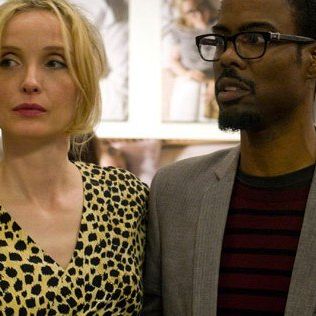
You’ve already heard what the buzz is on yesterday’s highly hyped Sundance offerings Bachelorette and The Surrogate, but what of some of the smaller, intriguing films that screened, too? Let’s check in.
2 Days in New York
Plot: In this sequel to Julie Delpy’s 2 Days in New Paris, Delpy’s Marion has found new love in Manhattan with Mingus (Chris Rock), but when her boorish French family comes to town – including her oafish father, oversexed sister, and unwelcome former flame – their relationship will be tested.
Reaction: The original 2 Days may seem like an unlikely property to sequelize, but with the addition of Rock (more natural and appealing on-screen than he’s ever been) and some obvious but undeniable laughs playing off of French stereotypes, the savvy Delpy has built herself a surprisingly mainstream vehicle. While it’s unmistakably a low-budget indie, this could still easily be advertised as a mass-market Chris Rock culture clash comedy without quite pulling a bait and switch. (Still, it’d help if they cut ten minutes.) IndieWire’s Eric Kohn gave the movie a B, while The Film Stage called it “a consistently funny intellectual examination of ignoring cultural norms.”
John Dies at the End
Plot: The first film in a decade from Bubba Ho-Tep director Don Coscarelli (who also made the cult hit Phantasm films) John Dies At The End is based on the novel by David Wong*, which Coscarelli stumbled upon via Amazon.com recommendations. A psychoactive drug called “soy sauce” has hit the streets, sending its users across time and dimensions on the trippiest of trips, but also robs them of their humanity … and the only people who can save earth are college dropouts David (newcomer Chase Williamson) and his trusty wingman, the titular John (Rob Mayes). Complicating things even further: John may be operating from a parallel dimension, or perhaps he’s just dead and a projection of David’s memory. Coscarelli’s biggest fan, Paul Giamatti, plays a reporter listening to David’s story.
Reaction: The most cracked-out B-movie to come around in a while, it’s great fun, but impossible to follow and filled with guts and gore. It starts off with David hacking off the head of a man who then comes back to life, and just gets wackier from there: There’s an icebox full of sausages that band together to create a monster, a mustache that flies off someone’s face and attacks David, and a doorhandle that turns into a penis. That it got made at all is a rare treat. There were plenty of walkouts at its midnight premiere, but the fanboys who stuck around were already calling for a sequel. Entertainment Weekly’s Jeff Lebreque was enthusiastic, acknowledging the lack of a plot, but pointing out that in this case it hardly matters.
LUV
Plot: A young boy (Michael Rainey, Jr.) accompanies his beloved uncle (Common), an ex-con now trying to become a legitimate businessman, on a day of errands that eventually takes a horrifying turn when the man’s criminal past comes back in spectacularly violent fashion.
Reaction: At times powerful, at times frustratingly clichéd, Sheldon Candis’s film is heartfelt, flawed, and magnificently acted. As the idolized, troubled uncle who tries to teach his nephew life lessons even as he falls from grace in the young boy’s eyes, Common conveys anger, vulnerability, and shame with a remarkably subdued performance. He holds together this uneven film that could have easily slipped into the realm of unbearable crime melodrama. Sean P. Means at the Salt Lake Tribune agreed, saying “The plot stalls in a few places, but the depiction of rough-and-tumble Baltimore is satisfyingly gritty.”
Room 237
Plot: A highly-stylized documentary look at Stanley Kubrick’s The Shining and the many conspiracy theories that it’s provoked from superfans over the years – from the intriguing idea that it might be about the genocide of the Native Americans to the slightly battier one that it might be a confessional about Kubrick’s faking of the moon landing.
Reaction: Strange, gripping, and enchanting, this is a documentary that’s not so much about the theories themselves but about the way we like to obsess over great films. Rather than using talking heads, director Rodney Ascher analyzes footage from the film (and other films) over audio of his subjects theorizing. That also makes us wonder just how he intends to clear all this footage … so you may want to catch this at festivals if and when you get the chance.
Related
Sundance Day 4 Buzz Meter: John Krasinski’s Infidelities, Alison Brie’s Wedding Blues
Sundance Day 3 Buzz Meter: Richard Gere’s White Collar Crimes
Sundance Day 2 Buzz Meter: Campy Red Lights, Frustrating Simon Killer
Sundance Buzz Meter: How Did the First-Day Movies Fare?
* This post has been corrected to identify the writer of John Dies at the End as David Wong, not James Wong.

